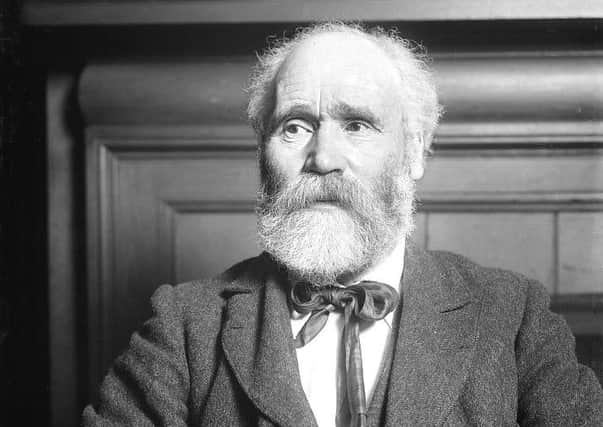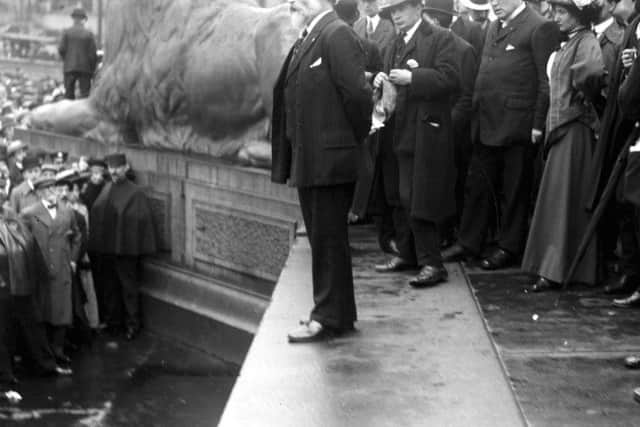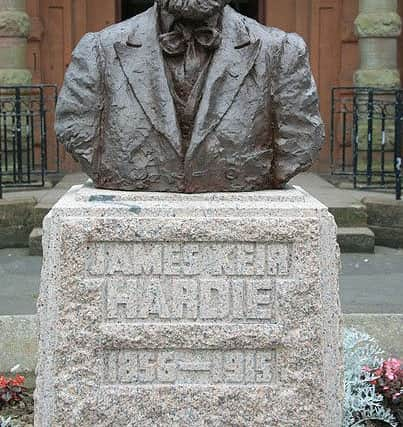On this day in 1856: Birth of Labour Party founder Keir Hardie


Born to domestic servant Mary Keir, the child had next to no contact with his birth father William Aitken, and was instead brought up by stepfather David Hardie.
When Hardie was still young, the family moved to Govan, where his stepfather - a ship’s carpenter by trade - attempted to retain employment in the shipyards.
Advertisement
Hide AdAdvertisement
Hide AdHardie himself gained employment at the tender age of seven, becoming a messenger boy for the Anchor Line Steamship Company.


As a result, Hardie was unable to attend school, but his mother and stepfather spent evenings teaching him to read and write.
By the time he was ten years old, Hardie had had more than five jobs, lost a sibling to illness, seen his father return to sea and moved to Newarthill with his mother.
At one point, Hardie’s earnings were the family’s only source of income, and following the family’s relocation to Newarthill, he began working as a ‘trapper’ in the mines - that is, opening and closing doors for ten-hour shifts to maintain air supply for miners - and attended night school classes in Holytown.
Hardie’s stepfather eventually returned from sea to Newarthill and began working on the railway line being constructed between Glasgow and Edinburgh.


When the family then moved to the South Lanarkshire village of Quarter, Hardie was taken on as a pony driver at the mines, later working as a hewer and then in quarries.
By 20, he was a skilled miner. But his interests lay away from the mines, and he became a member of a local church where he honed his public speaking skills.
Advertisement
Hide AdAdvertisement
Hide AdHis abilities led to his fellow workers in the mines viewing him as a figurehead. But mine owners began to grow wary of Hardie, and blacklisted him and two of his siblings from working in the mines
The mine owners’ decision spurred Hardie onto union organisation work, and in October 1879 he was elected National Secretary at the National Conference of Miners, held in Dunfermline.


The following year he played a major role in the strike wave, including the six-week long strike wave in Lanarkshire.
Throughout the 1880s, Hardie worked tirelessly to support the miners, eventually establishing the Ayrshire Miners Union in 1886 and taking on the role of Organising Secretary.
Hardie and his wife Lillie relocated to Cumnock, where he spent nearly a year organising a union of local miners as well as writing for the local newspaper, the Cumnock News.
After a spell supporting the Liberal Party, Hardie felt disillusioned by party leader William Ewart Gladstone and his economic policies, and feared the party would not have the interests of the working classes at heart.


In April 1888, Hardie stood as an independent labour candidate at the Mid-Lanarkshire by-election. He finished last but four months later became the first secretary of the Scottish Labour Party (different to the current Scottish Labour Party established in 1994) alongside party president Robert Cunninghame Graham - the first socialist MP - who later founded the SNP forerunner the National Party of Scotland.
Advertisement
Hide AdAdvertisement
Hide AdIn 1892, Hardie stood in West Ham South, defeating the Conservative Party candidate by 5268 votes to 4036 and winning a seat in Parliament.
The following year Hardie co-founded the Independent Labour Party and made a name for himself when he asked for a message of condolence for relatives of the 251 victims of an explosion at a Welsh colliery to be included in an message of congratulations on the birth of a royal baby - later Edward VIII.
Hardie’s request was snubbed and he delivered a speech attacking the monarchy - an address some believe contributed to the loss of his seat in 1895.
Hardie continued to expand the Labour movement and spoke at a number of public gatherings, as well as being briefly arrested at a women’s suffrage meeting in London.
In 1900, Hardie helped set up a Labour Representation Committee - which would later become the Labour Party.
He was elected junior MP for Merthyr Tydfil and Aberdare in Wales, and represented the constituency for the rest of his life.
Hardie resigned as leader of the newly-named Labour Party in 1908, and focused his attentions on campaigning for votes for women, developing a close relationship with Sylvia Pankhurst, daughter of Emmeline.
Advertisement
Hide AdAdvertisement
Hide AdAs a pacifist, Hardie was outraged by the outbreak of World War I, and along with fellow socialist leaders in other countries, attempted to organise an international strike to halt the war.
Hardie died after suffering a series of strokes, on September 26 1915, at the age of 59. He was cremated in Maryhill, and a memorial stone stands in his honour at Cumnock Cemetery.
His legacy lived on, with his daughter becoming provost of Cumnock and his younger half-brothers David and George, as well as his sister-in-law Agnes, all becoming Labour MPs.
There are 40 streets named for Keir Hardie throughout Britain, and his name adorns buildings at Swansea University, a Methodist church in London and a sports centre in his childhood home of Holytown.
He was voted the Labour Party’s ‘greatest hero’ by party delegates in 2008.